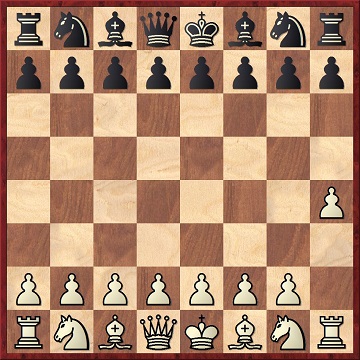
Edward Winter

Here is a game in which Dawid Janowsky, one of the world’s leading players at the time, played a ‘fantasy opening’. The allies were Davril, Dutkowsky and Martin St-Léon.
Dawid Janowsky – Allies
Paris, 22 May 1901
Irregular Opening
1 h4 e5 2 h5 d5 3 e3 f5 4 b3 Be6 5 Bb2 Nd7 6 Nf3 Bd6 7 Nc3 a6 8 Bd3 Qe7 9 Nxd5 Bxd5 10 Bxf5 Nh6 11 Bxd7+ Kxd7 12 c4 Be4 13 d3 Bb4+ 14 Ke2 Bxf3+ 15 gxf3 c6 16 d4 e4 17 fxe4 Qxe4 18 Rg1 Nf5 19 Qd3 Qxd3 20 Kxd3 Rhg8 21 e4 Nh4
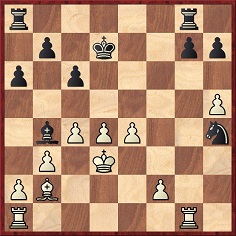
22 f4 Raf8 23 Raf1 g6 24 hxg6 Rxg6 25 f5 Rg2 26 Rxg2 Nxg2 27 Rh1 Rf7 28 d5 cxd5 29 cxd5 h5 30 Rh2 Nf4+ 31 Kc4 Be1 32 Be5 Bg3 33 Bxf4 Bxf4 34 Rxh5 Be5 35 Rh6 Bf6 36 Kc5 Bg5 37 Rd6+ Kc7 38 Re6 Be3+ 39 Kc4 Kd7 40 f6 Bf2 41 e5 Bg3 42 Kd4 Rh7 43 Ke4 Be1 44 Kf5 Bb4 45 Kg6 Rh4 46 Rb6 Kc7
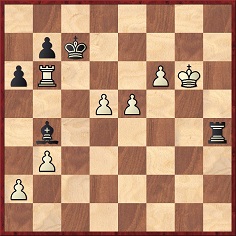
47 Rxb4 Rxb4 48 f7 Rf4 49 Kg7 Resigns.
Source: La Stratégie, 15 June 1901, pages 172-173.
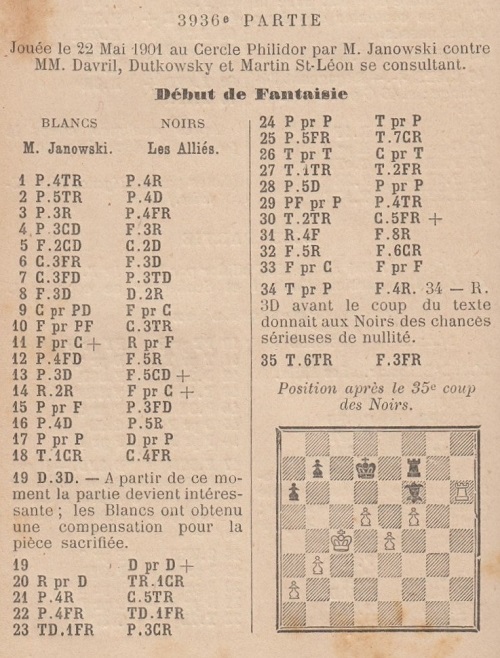
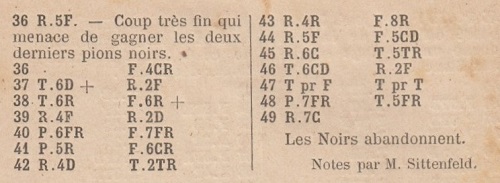
(2272)
Here now is Bogoljubow trying it:
Efim Bogoljubow – Schuppler
Haslach, September 1949
Irregular Opening
1 h4 d5 2 d4 c6 3 Nf3 Nf6 4 Nbd2 Bf5 5 c3 Nbd7 6 Ne5 Nxe5 7 dxe5 Nd7 8 Qa4 h5 9 Nf3 Qc7 10 Bf4 e6 11 Bh2 g6 12 Nd4 Bg7 13 Nxf5 gxf5 14 f4 Nc5 15 Qc2 Ne4 16 g3 Bh6 17 Bg2 O-O-O 18 Rd1 Rdg8 19 Bxe4 dxe4 20 O-O Rg4 21 Kh1 Rhg8 22 b4 Bf8 23 a4 Be7 24 Rd2 Rd8 25 Rxd8+ Qxd8 26 Rd1 Qc7 27 a5 Rg8
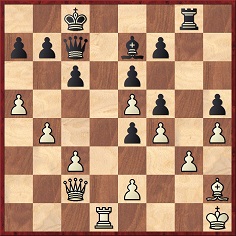
28 Bg1 Rxg3 29 Bxa7 c5 30 Qa4 Qc6 31 b5 Qe8 32 Rg1 Qg8 33 Rxg3 Qxg3 34 Qc4 Qh3+ 35 Kg1 Qg4+ 36 Kh1 Qh3+ 37 Kg1 Qe3+ 38 Kh1 Qh3+ 39 Kg1 Qg3+ 40 Kh1 Qxh4+ 41 Kg2 Qg4+ 42 Kh1 Qh3+ 43 Kg1 Qg3+ 44 Kh1 h4 45 a6 Qh3+ 46 Kg1 Qg3+ 47 Kf1 e3 48 White resigns.
Source: Faschingsschach der Welt by H. Klüver, pages 10-11, which indicated that the game had originally appeared in Die Welt, 2 November 1949.
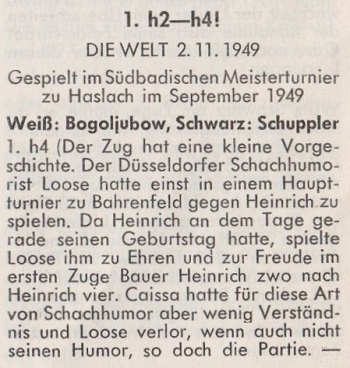

(2671)
From Oliver Beck (Seattle, WA, USA):
‘In 1917 Francis Picabia challenged Henri-Pierre Roché to a game of chess to determine the fate of two rival New York avant-garde magazines. Picabia, who published 391, beat Roché, who was then forced to cease publication of The Blind Man, which he produced with Marcel Duchamp and Beatrice Wood. The game-score appeared in Rongwrong (July 1917), a one-time Dada journal also published by Roché, Duchamp and Wood:
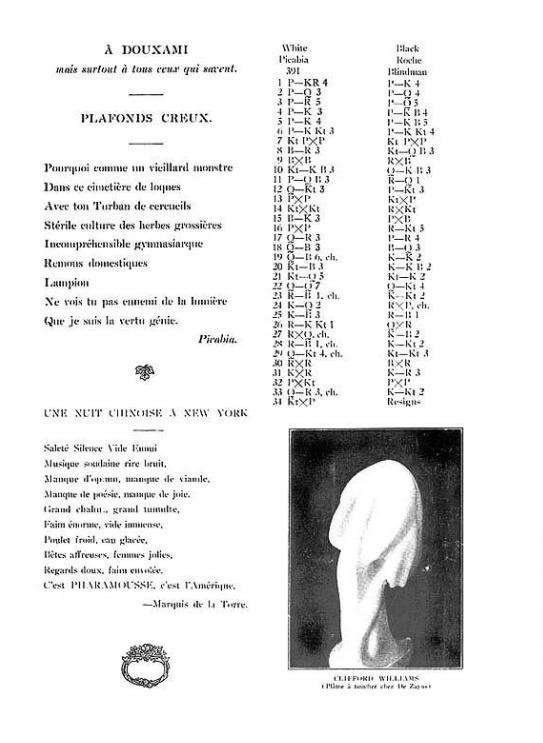
The game itself (1 h4 e5 2 d3 d5 3 h5 d4 4 e3 f5 5 e4 f4 6 g3 g5 7 gxf4 gxf4 8 Bh3 Nc6 9 Bxc8 Rxc8 10 Nf3 Qf6 11 c3 Rd8 12 Qb3 b6 13 cxd4 Nxd4 14 Nxd4 Rxd4 15 Be3 fxe3 16 fxe3 Rb4 17 Qa3 a5 18 Qc3 Bd6 19 Qc6+ Ke7 20 Nc3 Kf7 21 Nd5 Ne7 22 Qd7 Qg5 23 Rf1+ Kg7 24 Kd2 Rxb2+ 25 Kc3 Rf8 26 Rg1 Qxg1 27 Rxg1+ Kf7 28 Rf1+ Kg7 29 Qg4+ Ng6 30 Rxf8 Bxf8 31 Kxb2 Kh6 32 hxg6 hxg6 33 Qh3+ Kg7 34 Nxc7 Resigns) is bad and may be of little interest, but it possesses a certain dadaesque charm. The event is described on page 198 of Duchamp A Biography by Calvin Tomkins (New York, 1996):’
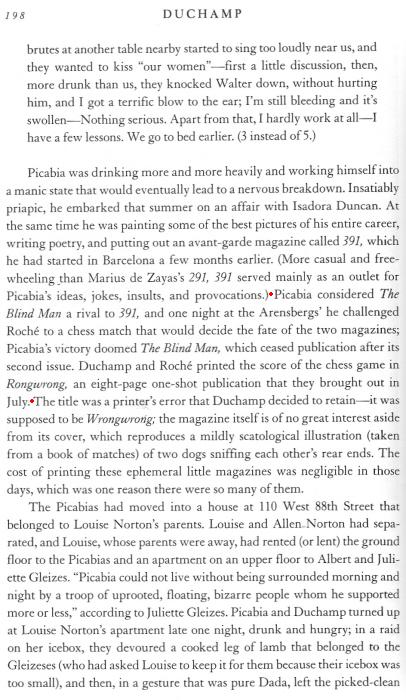
(7192)
Harrie Grondijs (Maastricht, the Netherlands) writes:
‘Page 14 of the catalogue of a 1983 exhibition of works by Beatrice Wood (1893-1998) has a 1917 drawing of Marcel Duchamp playing chess with Francis Picabia:
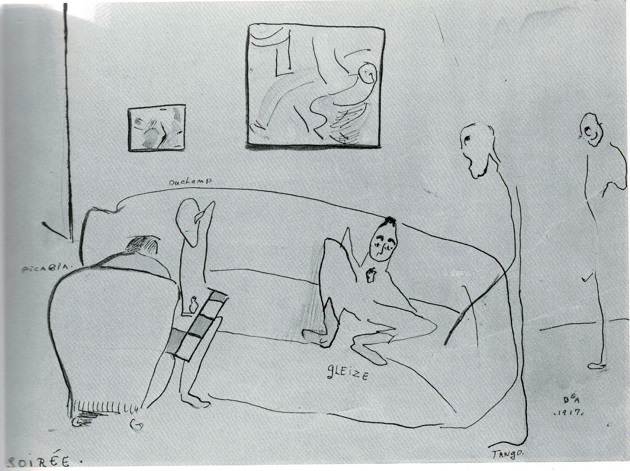
The accompanying text on page 14:
“Wood’s many drawings from this period provide us with the most complete and succinct visual record of the New York DADA group. In a drawing entitled Soirée of 1917 (fig. 8) we find Duchamp and Picabia intently engaged in a game of chess, while further down on the couch the French Cubist painter Albert Gleizes is sprawled out, staring obliviously into space. A fourth man labeled Tango appears to observe the progress of the chess match, while a fifth unidentified figure lurks mysteriously in the background.”
The catalogue also has, on page 23, a photograph of Duchamp, Picabia and Wood (Coney Island, 21 June 1917).’
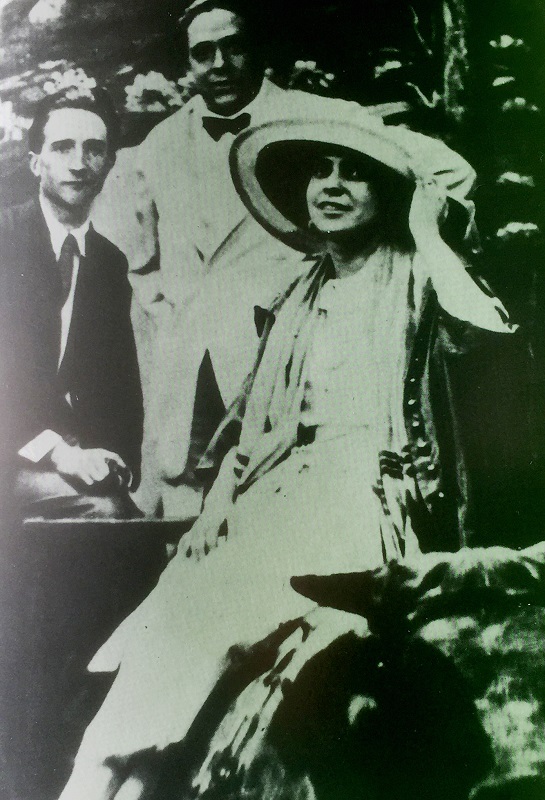
(10313)
A game on pages 13-14 of Exploring the Chess Openings by Hugh Myers (Davenport, 1978) began as follows:
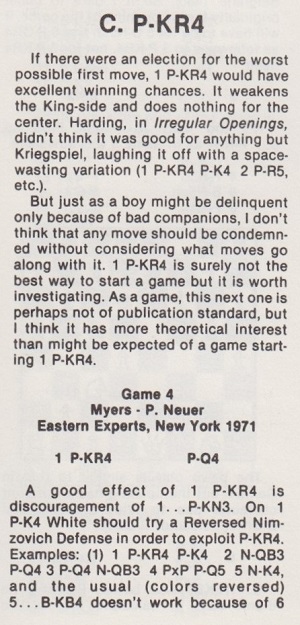
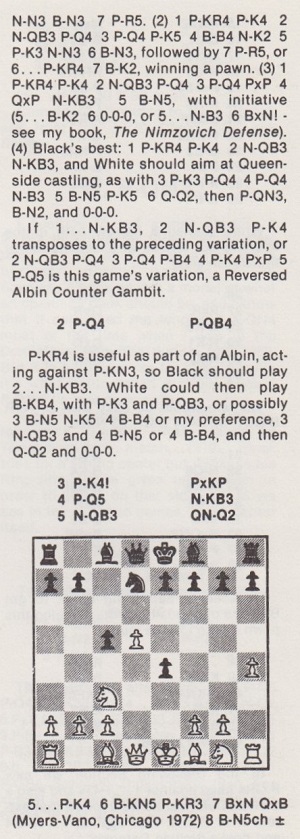
The full score from the book:
1 h4 d5 2 d4 c5 3 e4 dxe4 4 d5 Nf6 5 Nc3 Nbd7 6 Bg5 h6 7 Bxf6 Nxf6 8 Bc4 a6 9 a4 Bg4 10 Qd2 g6 11 Nge2 Bg7 12 Ng3 Qc7 13 Qe3 O-O 14 a5 Rac8 15 Ngxe4 Nxe4 16 Qxe4 Bf5 17 Qe2 Qf4 18 Nd1 Rfe8 19 c3 e6 20 Ne3 exd5 21 Bxd5 Re7 22 g3 Qe5 23 Qf3 h5 24 O-O Bh3 25 Rfe1 Qc7
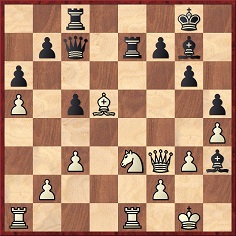
26 Nc4 Bg4 27 Rxe7 Qxe7 28 Qe3 Re8 29 Re1 Qxe3 30 Rxe3 Rxe3 31 fxe3 Be2 32 Nd6 Be5 33 Ne4 Bf3 34 Kf2 Bxe4 35 Bxe4 Bc7 36 Bxb7 Bxa5 37 e4 Kf8 38 Bxa6 Ke7 39 Kf3 Bc7 40 g4 hxg4+ 41 Kxg4 Kf6 42 Bc4 Bd6 Drawn.
The sole 1 h4 game given on page 69 of Irregular Openings by T.D. Harding (Dallas, 1984) was between unnamed players, and no particulars were provided except for ‘a recent London League game’.
Jerry Spinrad (Nashville, TN, USA) points out an item on the ‘Zulu Gambit’ on page 747 of the Adelaide Observer, 23 April 1881:
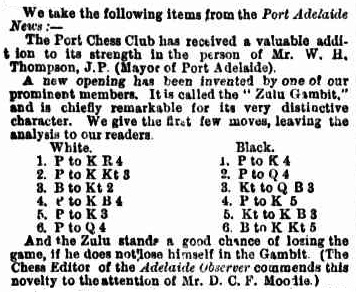
(9297)
An unresearched book on 1 h4 is The Shuffleduck by Ken Norbury (Sheffield, 2014). With no further details, the introductory section gives the game from C.N. 2272 (see above), headed ‘David Janowki versus Allies’.
From page 239 of My Seven Chess Prodigies by John W. Collins (New York, 1974):
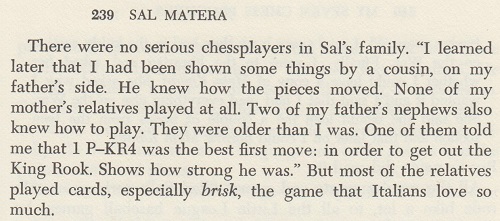
(10314)
To the Chess Notes main page.
To the Archives for other feature articles.
Copyright: Edward Winter. All rights reserved.